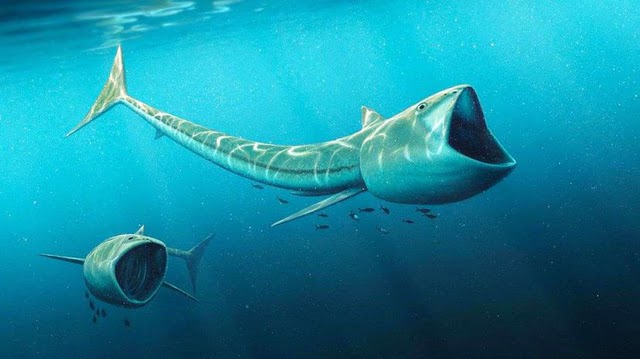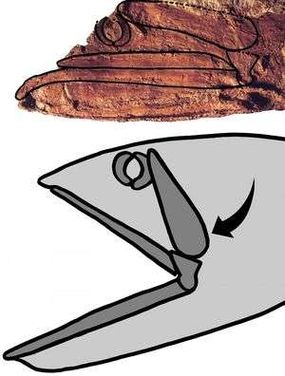Quck answer
Scientists have discovered fossils of an ancient filter-feeding fish in Colorado. The fish, called Rhinconichthys, lived in the oceans about 92 million years ago during the Late Cretaceous period. Rhinconichthys was a massive fish, growing up to 6 meters long, and it used its large gills to filter food particles from the water. This discovery sheds new light on the evolution of filter-feeding in fish and helps to fill in gaps in our knowledge about ancient marine ecosystems.
Extinct Animals

Scientists have found the skull fossils of an ancient fish species belonging to the extinct group of Rhinconichthys that lived approximately 92 million years ago during the Age of Dinosaurs. These fossils were discovered in Colorado, USA, and were known to be plankton-eating fish.

The Rhinconichthys, a filter-feeding fish, had a jaw structure that was similar to that of sharks rather than other bony fish.
Kenshu Shimada
Two new species of Rhinconichthys have been identified recently as fossils found in the US, Rhinconichthys purgatoirensis and Rhinconichthys uyenoi. These fossils belong to an extinct group of pachycormids. The Rhinconichthys genus is a group of bony bigmouth fish from the Cretaceous Period.
The fossils discovered suggest that the animal was over six feet long and had a jaw structure that was unusual in bony fish, similar to sharks, whose bodies are made of cartilage rather than bones. Modern animals that primarily feed on plankton include manta rays, whale sharks, and baleen whales such as blue whales. Rhinconichthys takes its name from the whale shark’s scientific genus, Rhincodon.В
The fossils were discovered by a team of international scientists. According to co-author and DePaul University paleobiologist Kenshu Shimada, “Based on our new study, we now have three different species of Rhinconichthys from three separate regions of the globe, each represented by a single skull. This tells just how little we still know about the biodiversity of organisms through the Earth’s history. It’s really mindboggling.”
During the Cretaceous Period, the inland Mexican Sea, also known as the Comanchean Sea, covered parts of Arizona, Colorado, Kansas, New Mexico, Oklahoma, and Texas.
FAQ
1. What are filter-feeding fish?
Filter-feeding fish are a type of fish that feed on tiny organisms by filtering water through their gills or other specialized structures.
2. What is the significance of the discovery of these fossils?
The discovery of these fossils provides insights into the evolution of filter-feeding fish and their role in the ecosystem during the Late Jurassic period.
3. Where were these fossils discovered?
The fossils were discovered in Colorado, in the Morrison Formation.
4. How old are these fossils?
These fossils are approximately 150 million years old.
5. What is the scientific name of the fish species?
The fish species is called Rhinconichthys purgatoirensis.
6. What is the size of these fish?
These fish could grow up to six feet in length.
7. What was the environment like during the Late Jurassic period?
The Late Jurassic period was characterized by a warm and humid climate, with shallow seas covering much of the land.
8. What other types of fish lived during the Late Jurassic period?
Other types of fish that lived during the Late Jurassic period include sharks, rays, and other bony fish.
9. How did filter-feeding fish contribute to the ecosystem during the Late Jurassic period?
Filter-feeding fish played an important role in the ecosystem during the Late Jurassic period by consuming large amounts of plankton and other small organisms, which helped to regulate the food chain.
10. What can we learn from these fossils?
These fossils can help us to better understand the evolution of filter-feeding fish and their role in the ecosystem during the Late Jurassic period.
11. What is the importance of studying ancient fossils?
Studying ancient fossils can provide important insights into the history of life on Earth, including the evolution of different species and the changes in the environment over time.





Leave a Reply